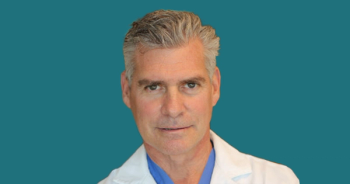
OTL-101 Shows Impressive OS, EFS Findings for ADA-SCID
An autologous lentiviral-based gene therapy demonstrated significant benefit, including high overall and event-free survival rates, immune reconstitution, and metabolic correction, for patients with ADA-SCID.
The lentiviral-based gene therapy OTL-101 demonstrated significant benefit for patients with adenosine deaminase severe combined immunodeficiency (ADA-SCID), including high overall and event-free survival rates, immune reconstitution, and metabolic correction, according to data from 3 studies published in the New England Journal of Medicine.
The 3 studies included a combined 50 pediatric patients with ADA-SCID, 30 enrolled in the United States (NCT02999984, NCT01852071) and 20 in the United Kingdom (NCT01380990). With 24 to 36 months of follow-up, respectively, the overall survival (OS) rate was 100% across all 50 patients, which is the largest ever reported cohort of gene therapy-treated patients with ADA-SCID. At 24 months, the event-free survival (EFS) rates were 97% in the United States studies and 95% in the United Kingdom study.
OTL-101 consists of autologous CD34+ hematopoietic stem cells (HSCs) that have been transduced ex vivo with a self-inactivating lentiviral vector, which encodes the human ADA gene. Overall, engraftment of the genetically modified HSC was persistent in 48 of the 50 patients treated with OTL-101. Engraftment brought about significant metabolic detoxification and immune reconstitution. Overall, 90% of those in the United States studies and 100% of those in the United Kingdom were able to discontinue immunoglobulin-replacement therapy.
“Results from a one-time treatment with experimental lentiviral HSC gene therapy for ADA-SCID are compelling, most notably the overall and event-free survival rates observed at 2- and 3-years post-treatment,” lead author Donald Kohn, MD, from the University of California, Los Angeles (UCLA), said in a statement. “We saw no reports of graft versus host disease, and the ability to discontinue immunoglobulin replacement therapy over time in most patients is also notable for the gene therapy, contributing to its overall benefit-risk profile as a potential treatment for ADA-SCID.”
The median age at the time of treatment in the United States was 10 months and was 11.6 months in the United Kingdom. In the United States, the HSC cells were collected exclusively from the bone marrow, with 67% were given as fresh formulations and the remainder as cryopreserved. In the United Kingdom, 15% was collected from the bone barrow and 85% were from mobilized leukapheresis, and all resulting in fresh formulations.
The median number of CD34+ cells infused per kilogram of body weight in the United States was 7.41 × 10^6 and was 12.62 x 10^6 in the United Kingdom. After stem cell harvest and prior to administration of the gene therapy, all patients received a nonmyeloablative weight-adjusted busulfan condition regimen.
Forty-nine of 50 patients entered the studies on enzyme replacement therapy with PEG-ADA, with baseline ADA activity of 0.05 to 2.0 nmol/hr/mg. The study stipulated that PEG-ADA could be stopped 30 days after treatment with the gene therapy. Following treatment with OTL-101, the ADA enzyme activity spiked in the first 3 months and normalized throughout the course of the study for most patients. Enzyme replacement therapy was resumed in 2 of the 50 patients across the 3 studies with insufficient engraftment.
Adverse events were mild to moderate and were more commonly associated with the conditioning regimen. Overall, there was no evidence of monoclonal expansion, leukoproliferative complications, or emergence of replication-competent lentivirus. Moreover, autoimmunity and graft-versus-host disease were not observed in the studies. The most common adverse event was pyrexia, which was observed in 30% of patients.
“With sustained engraftment of up to 3 years, these data show the potential of HSC gene therapy to correct the underlying genetic cause of ADA-SCID, delivering positive outcomes in a single treatment,” Bobby Gaspar, MD, PhD, chief executive officer of Orchard Therapeutics, said in a statement. “We are encouraged by the results we’ve seen across this large dataset of 50 treated patients, and believe they reinforce the promise of the HSC gene therapy approach for treating and potentially curing certain life-threatening genetic diseases.”
Based on previous findings, OTL-101 has received a breakthrough therapy designation from the FDA as well as a rare pediatric disease designation. The gene therapy has also received orphan drug designation from the FDA and the European Medicines Agency and in August 2017, the agent received a promising innovative medicines designation in the United Kingdom.
Newsletter
Stay at the forefront of cutting-edge science with CGT—your direct line to expert insights, breakthrough data, and real-time coverage of the latest advancements in cell and gene therapy.











































